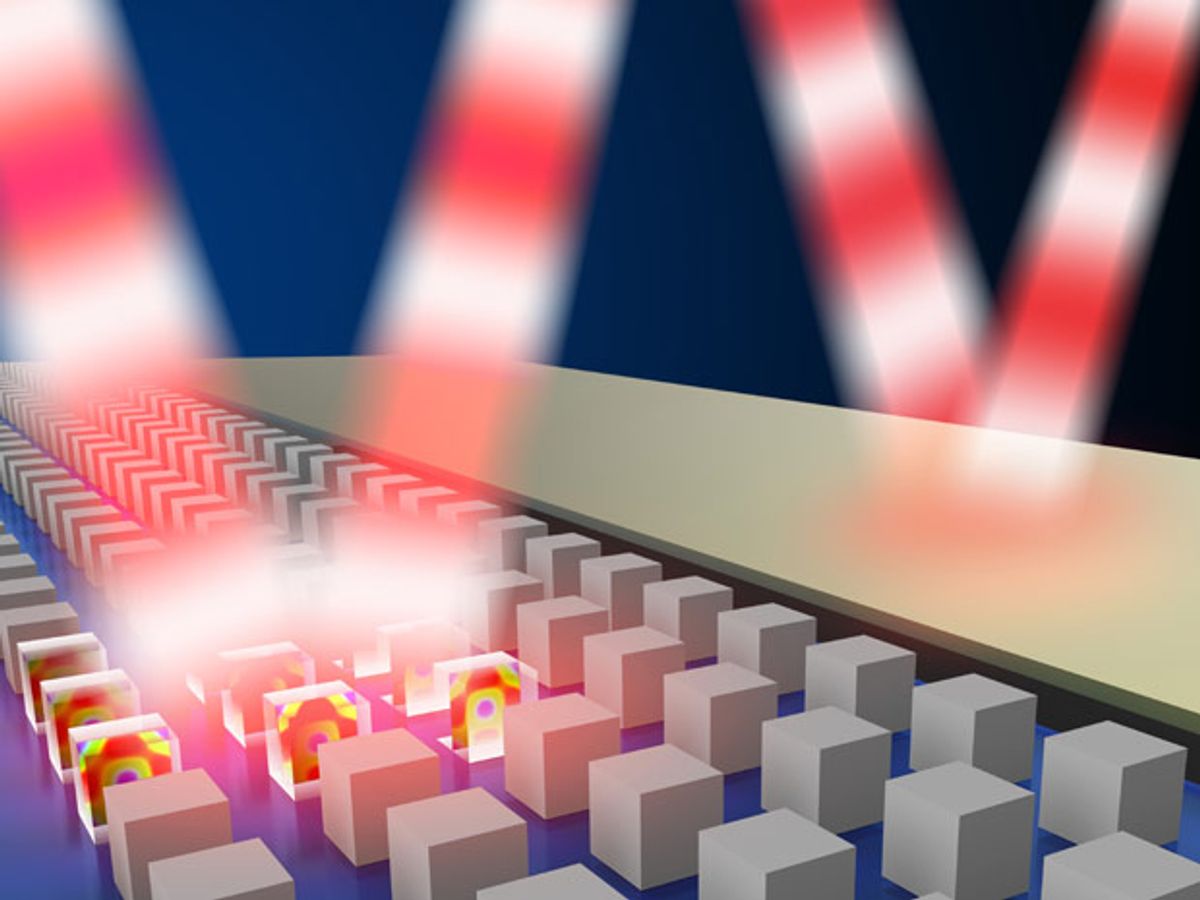Researchers at Sandia National Laboratory have developed a two-dimensional array of non-metallic nanoscale structures that interact with the magnetic component of incoming light in such a way that they could enable a new generation of chemical sensors, solar cells, lasers, and other optoelectronic devices.
We are, of course, familiar with traditional mirrors, which interfere with incoming light so that they reflect back a reverse image that our eyes can see. However, what we don’t see is that these mirrors also interact with the incoming light so that its electrical field is reversed, essentially cancelling out the light’s electrical component.
But what if you didn’t want to cancel out that electrical component of the light and instead have nanoscale antennas at a mirror’s surface capture it so it could be used for a host of optoelectronic devices? The way to do that has been something called “magnetic mirrors,” which interact with light’s magnetic field and preserve light’s original electrical properties.
Since nature does not provide a material for producing magnetic mirrors, researchers have turned to metamaterials, which can be broadly defined as an artificially structured material fabricated by assembling different objects so as to replace the atoms and molecules that one would see in a conventional material. The resulting material has very different electromagnetic properties than those that occur naturally or are chemically synthesized.
Prior to this most recent research, metamaterials could only produce this magnetic mirror effect for microwave frequencies; this limited it to a small number of applications such as microwave antennas.
At wavelengths shorter than those at microwave frequencies, there has been some success in using “fish-scale” shaped metallic components. However, this approach has suffered from loss of signal and uneven responses.
In the research, which was published in the journal Optica, the Sandia team used tellurium to reduce the signal loss that is associated with metals. The telluride-based nanostructures also resulted in magnetic mirrors that were reflective at infrared wavelengths and led to a much stronger electrical field at the mirror’s surface.
“We have achieved a new milestone in magnetic mirror technology by experimentally demonstrating this remarkable behavior of light at infrared wavelengths,” said Michael Sinclair, a Sandia scientist who co-authored the Optica paper, in a press release.
“Our breakthrough comes from using a specially engineered, non-metallic surface studded with nanoscale resonators.”
What may make the approach most attractive is the fact that it can be produced with widely used deposition lithography and etching processes.
In future research, the team intends to investigate other materials to reveal their magnetic mirror behavior with an eye towards getting to shorter optical wavelengths. This should expand the optoelectronic applications.
“If efficient magnetic mirrors could be scaled to even shorter wavelengths, then they could enable smaller photodetectors, solar cells, and possibly lasers,” said Sheng Liu, Sandia postdoctoral associate and lead author on the Optica paper, in the release.
Dexter Johnson is a contributing editor at IEEE Spectrum, with a focus on nanotechnology.



